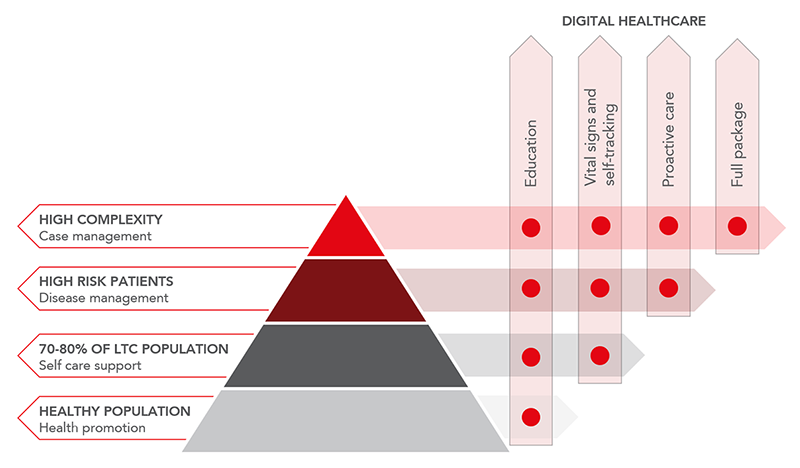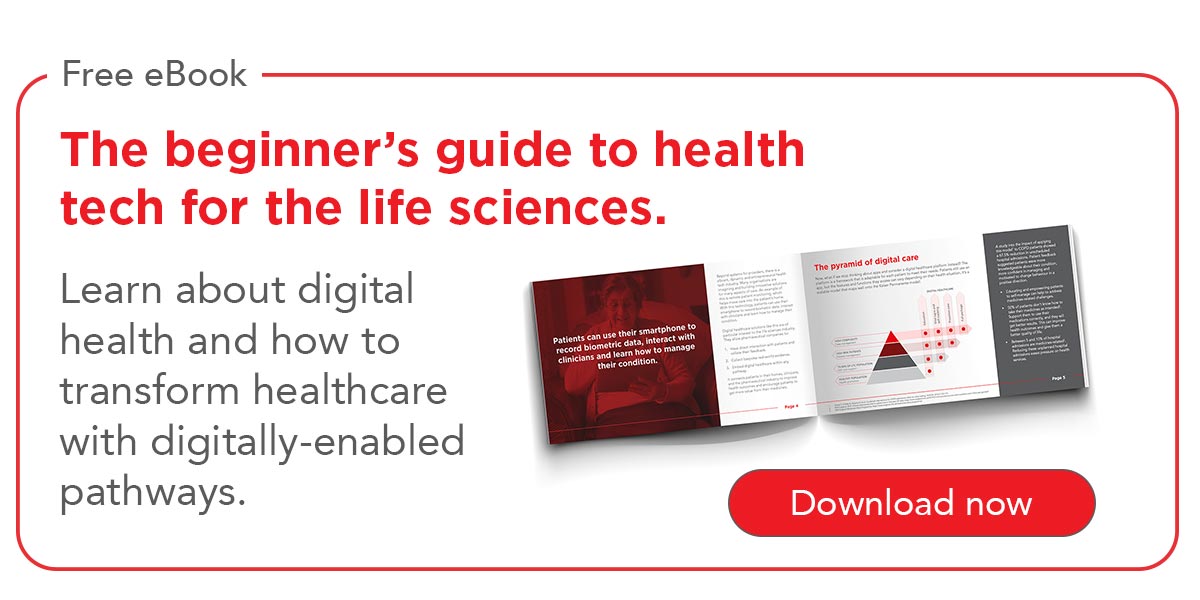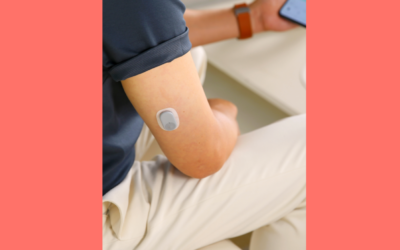By Steve Marriott on April 20, 2021
What is digital healthcare?
It’s only forty years since healthcare provision was an analogue affair. In that world before computers, every aspect of care was paper-based. Medical notes were hand-written and filed in isolation. Communication between clinicians was slow and confined to letters and telephone calls. As a result, the limits of analogue working constrained the quality and pace of patient care.
In our digitally-enabled and always-on world, we now have an electronic health record (EHR) for each patient. Recording details of every encounter builds a detailed digital history of our health. But, it’s when you look past the EHR that digital healthcare gets interesting. It’s what we do with the data about symptoms, diagnoses and treatment that transforms care.
The benefits of digitising healthcare are profound:
- Medical records are more complete and detailed. They have higher levels of accuracy and are easier to read too.
- Clinicians and carers along the patient journey can access their patients’ medical records at any time, wherever they are.
- modern processing technologies, such as artificial intelligence and machine learning, encourage proactive services.
Digital healthcare is much more than replacing paper with computers. It’s an opportunity to make healthcare more efficient, optimise prescribing and improve outcomes. Best of all, it’s an opportunity to explore imaginative new ways to make a difference.
The impact of digital healthcare
It’s easy to underestimate how digitisation has already driven transformation. Today’s NHS has electronic prescription services, shared care records and population health systems. These (and other) services are designed to save time, make healthcare safer for patients and improve health outcomes.
We can attribute the impact of digital healthcare to three parallel and entwined factors:
- The pace of technological development enabled rapid advances in IT capabilities. For example, over the last 30 years, we have moved from limited desktop storage through local networks to cloud-based systems.
- National IT and infrastructure programmes created scale. Regional and national initiatives replaced individual and local projects.
- Collaboration across care settings and technology providers led to integrated systems. Islands of data are being replaced with interoperable systems that share information.
Digital healthcare and the life sciences
Beyond systems for providers, there is a vibrant, dynamic and entrepreneurial health tech industry. Many organisations are imagining and building innovative solutions for many aspects of care. An example of this is remote patient monitoring, which helps move care into the patient’s home. With this technology, patients can use their smartphone to record biometric data, interact with clinicians and learn how to manage their condition.

Digital healthcare solutions like this are of particular interest to the life sciences industry. They allow pharmaceutical companies to:
- have direct interaction with patients and collate their feedback.
- collect bespoke real-world evidence.
- embed digital healthcare within any pathway.
It connects patients in their homes, clinicians, and the pharmaceutical industry to improve health outcomes and encourage patients to get more value from their medicines.
The pyramid of digital care
Now, what if you stop thinking about apps and consider a digital healthcare platform instead? The platform is a framework that is adaptable for each patient to meet their needs. Patients still use an app, but the features and functions they access can vary depending on their health situation. It’s a scalable model that maps well onto the Kaiser Permanente model:

A study into the impact of applying this model[1] to COPD patients showed a 67.5% reduction in unscheduled hospital admissions. Patient feedback suggested patients were more knowledgeable about their condition, more confident in managing and motivated to change behaviour in a positive direction.
- Educating and empowering patients to self-manage can help to address medicines-related challenges.
- 50% of patients don’t know how to take their medicines as intended[2]. Support them to use their medications correctly, and they will get better results. This can improve health outcomes and give them a better quality of life.
- Between 5 and 10% of hospital admissions are medicines-related[3]. Reducing these unplanned hospital admissions eases pressure on health services.
Daily patient-recorded data lets pharmaceutical companies see the true value of their medicines.
Emerging opportunities
Along with mobile computing with smartphones, tablets, and wireless connectivity, other emerging technologies have exciting healthcare potential.
Personal and wearable devices can generate large quantities of data in the background while we get on with daily life. Smartwatches and fitness trackers are the most prominent examples; many are available with built-in heart rate monitors. There are more specific devices available, too, such as for continuous blood glucose monitoring.
Artificial intelligence (AI) describes how systems can learn, reason and problem solve. It’s more prevalent today than you might imagine. Apple’s Siri uses AI to interpret speech and create its responses.
The internet of things is a term for anything that connects to the internet. It includes smart home devices such as video doorbells and smart heating thermostats.
These emerging technologies are likely to be the catalysts for the next stage of the digital healthcare revolution. Imagine a world where your smartwatch detects that your health deteriorates and then tells you what you should do or even alerts your clinician for you. The possibilities are fascinating.
Next Steps
Digital healthcare has snowballed since the 1980s. During that time, we’ve moved on from paper notes to NHS-wide cloud-based connected systems. The NHS, service providers and patients are seeing the benefits of this digital transformation. This will continue as the technology gets more sophisticated. We can only imagine what our children’s healthcare experience will be in the future.
The benefits for the life sciences industry are now clear and available. Download our guide to discover how the pharmaceutical industry can design and deploy successful digital health services.
References:
[1] Ghosh S, O’Kelly N, Roberts EJ et al. Combined interventions for COPD admissions within an urban setting. BJHCM: 2016;3:122–131.
[2] NHS England, 2019. Clinical pharmacists vital to patient care in five-year GP deaL https://www.england.nhs.uk/2019/01/clinical-pharmacists-vital-to-patient-care-in-five-year-gp-deal/
[3] NHS England Medicines Value Programme, https://www.england.nhs.uk/medicines/value-programme/



